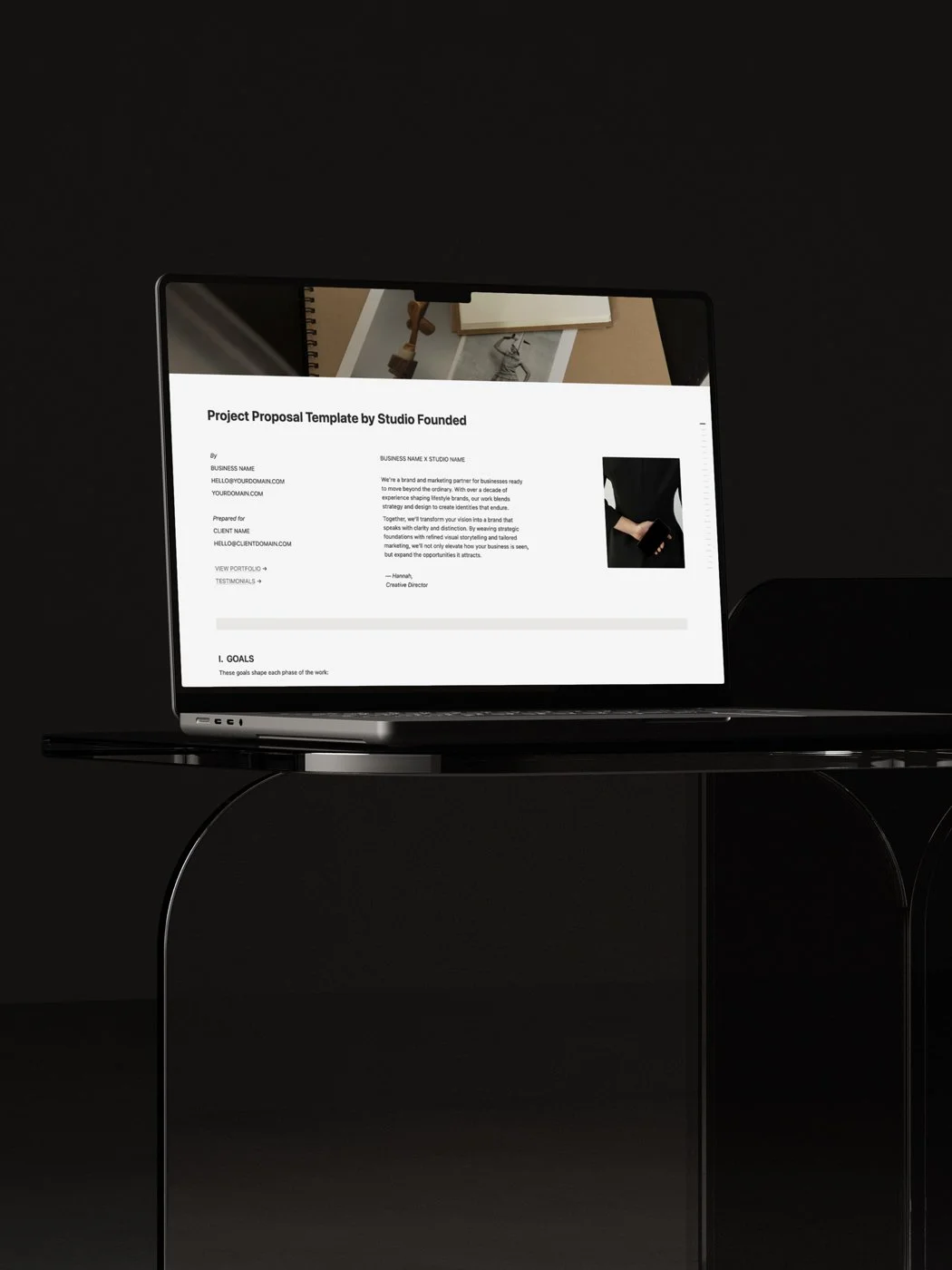Brand Archetypes: Structure, Soul, and Strategy
Brand Materials is a ten-part series for founders exploring the foundations of brand strategy, from purpose and positioning to voice, personality, and emotional connection.
Each entry is a self-guided workshop, structured to give direction while letting your ideas unfold. Think of it as a companion to your branding process: a place to ask sharper questions, refine your message, and shape a brand that’s deeply compelling.
In this post, we’ll explore brand archetypes and how they give your brand a recognizable character.
What Are Brand Archetypes?
Some characters stay with us long after the story ends. Odysseus, the restless wanderer; Miss Honey, the gentle protector; Sherlock Holmes, the seeker of truth.
That’s not an accident. These archetypes tap into patterns we instinctively recognize and roles we understand without needing them explained.
Brands work the same way. When your brand embodies a clear archetype, it sends a signal: This is who we are. This is how we show up. And that familiarity is magnetic. It builds trust.
Think of Disney. From the castle logo to the tagline “where dreams come true,” everything about the brand reinforces its identity as the Magician: transformational, enchanting, limitless. It sells wonder.
Archetypes help your brand feel like a character, not a company.
Understanding The Twelve Brand Archetypes
The twelve archetypes are shorthand for the roles brands can play in people’s lives. Each one reflects a distinct way of showing up in the world.
The Innocent
Purity, sincerity, and simplicity. Innocent brands create safety, optimism, and a sense of wholesomeness.
The Explorer
Adventure, freedom, and self-discovery. Explorer brands invite people to break routine, seek new horizons, and embrace independence.
The Sage
Wisdom, clarity, and knowledge. Sage brands position themselves as trusted authorities, offering insight and guidance.
The Hero
Courage, determination, and resilience. Hero brands empower people to overcome challenges and rise to their best.
The Outlaw
Rebellion, independence, and nonconformity. Outlaw brands break the rules and encourage others to embrace their own path.
The Magician
Transformation, creativity, and vision. Magician brands spark wonder and promise extraordinary experiences.
The Everyman
Authenticity, honesty, and approachability. Everyman brands build trust by being down-to-earth and relatable.
The Lover
Passion, intimacy, and beauty. Lover brands evoke desire, indulgence, and deep connection.
The Jester
Playfulness, joy, and irreverence. Jester brands bring levity, laughter, and a sense of fun.
The Caregiver
Compassion, empathy, and support. Caregiver brands nurture, protect, and offer comfort.
The Creator
Imagination, artistry, and innovation. Creator brands inspire originality and self-expression.
The Ruler
Authority, control, and prestige. Ruler brands lead with confidence, offering security, order, and status.
How to Find Your Brand Archetype
Choosing an archetype isn’t about squeezing your brand into a box. It’s about naming the energy that’s already there, and the role your brand naturally plays in people’s lives.
Use these prompts to help surface it:
1. Purpose
Are you here to empower people? Uplift them? Create space for joy or transformation? If your work is about resilience and strength, you may lean toward the Hero. If you challenge norms and ignite bold change, the Rebel might feel like home. For joy, play, and levity? Consider the Jester. Not sure of your purpose? Start with our post on finding Brand Purpose.
2. Values
What principles shape how you work? If care, empathy, and consistency are core to your brand, you might be aligned with the Caregiver. If your work is led by insight and clarity, the Sage could be a fit. Your values are often the clearest breadcrumbs to your brand’s personality. Need clarity here? Visit our post on defining Brand Values.
3. Distinction
What sets you apart in your field? Are you bringing something radical, beautiful, or deeply personal to your industry? The Explorer, Creator, or Lover archetypes often show up for brands that push boundaries through expression, experience, or craft. Still finding your uniqueness? Explore our post on Unique Selling Points.
4. Audience
Who are you really here for? Your brand doesn’t exist in a vacuum. What does your ideal client crave? If they’re seeking adventure, transformation, or reinvention, you might align with the Explorer or Magician. If they desire intimacy, indulgence, or beauty, the Lover could be your lead.
5. Emotional Resonance
When someone lands on your site or experiences your work, how should they feel? Safe and supported (Caregiver)? Inspired and empowered (Hero)? Awakened to new possibilities (Magician)? Your desired emotional resonance can point directly to your archetypal alignment.
Choosing a Secondary Brand Archetype
You might be wondering: do I have to choose just one archetype?
The answer is no. Your brand isn’t one-dimensional, so why limit yourself to one archetype? While your primary archetype defines the core of your identity, a secondary archetype can add nuance and dimension. Together, they create a personality that feels layered and alive.
For example, Apple is a Creator brand with a focus on innovation (standing for design, innovation, and originality.). But it also leans into the Magician archetype, positioning itself as a brand that transforms through technology. That pairing makes the brand both visionary and aspirational.
Not every business needs a secondary archetype, but if you feel pulled toward two, consider how they interact. Do they reinforce each other? Do they open up storytelling range without diluting clarity?
Applying Your Brand Archetype to Messaging
Once you’ve chosen your archetype, the magic begins: bringing it to life through your brand’s voice, visuals, and presence. Your archetype shapes how your brand sounds, feels, and connects.
If you’re building your brand yourself, this becomes your anchor. Archetypes give you a strategic foundation, so you’re not just picking pretty colors or clever words in isolation, but creating a strategic identity.
Here’s how to translate your archetype into your brand expression:
Brand Keywords
Start with language. What words and themes naturally emerge from your archetype? For the Explorer, think adventure, freedom, discovery. For the Caregiver, nurture, trust, protection. These words can become touchstones in your copy, design direction, and even content planning.
Brand Voice
Your archetype shapes not only what you say, but how you say it. A Sage speaks with clarity and calm authority, offering insight without condescension. A Jester uses wit, play, and surprise to keep things light and memorable. Rhythm, tone, and pacing all matter here. They help your audience recognize you instantly. We’ll dive deeper into this in the next post on Brand Voice.
Brand Visuals
Your visuals should communicate the same energy as your words. A Caregiver brand may lean into warm tones and soft imagery that feel like an exhale. A Magician might use layered textures, moody palettes, or surreal photography to evoke awe and transformation. Do your visuals deliver the emotional promise that’s associated with your archetype?
Repositioning Through Archetypes
Here’s an example of how a business can reposition themselves through their archetype:
Before:
Marla was a wellness copywriter offering “content that connects.” Her tone was soft and friendly, but her message blended in. Her website read like many others: empathetic, approachable, but indistinct. Clients liked her, yet struggled to see why they should choose her over countless similar options.
After Identifying Her Archetype:
Marla realized she had been showing up as the Innocent: warm, likable, but indistinct. Her real strength was in discernment, depth, and pattern recognition. She aligned with the Sage archetype and repositioned herself as a Strategic Brand Copywriter for Mind-Body Practitioners.
Her messaging shifted to: “translating deep wisdom into clear, trustworthy words.” She began leading strategy calls, building research-backed messaging maps, and guiding her clients toward communication that felt both credible and compelling. Her voice became more precise and structured, grounded in authority rather than general friendliness.
The Result:
The Sage archetype didn’t just refine her tone. It gave her a framework to own her authority and stand apart.
Recap
Archetypes give your brand a recognizable character that audiences intuitively understand.
In this post, you’ve explored:
The twelve archetypes and what they represent
How to identify your primary (and optional secondary) archetype
Ways to bring your archetype into your messaging, voice, and visuals so your brand feels distinct and consistent
Concluding Thoughts
When you anchor your identity in a timeless narrative, you’re no longer trying to stand out through surface-level aesthetics or clever copy alone. You’re tapping into story patterns that audiences instinctively understand and gravitate toward. This roots your brand in stories that endure.
Read the Next Post: Brand Voice
In the next entry in the Brand Materials series, we’ll explore how to translate your archetype into words. If you’ve ever struggled to create messaging that feels both engaging and consistent, this post will help you refine your tone, rhythm, and perspective into a voice that’s recognizable.






